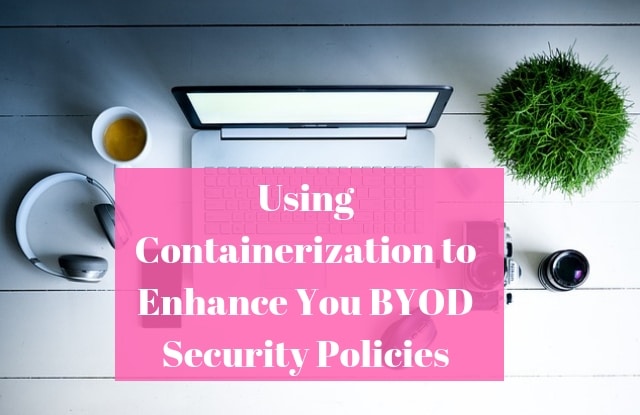BYOD (bring your own device) policies have become the norm in the business world, with more organizations choosing to encourage their employees to engage in their normal work while using personal devices. Sadly, 21% of organizations have experienced data breaches that stem from DYOB devices through company data being mishandled. As such, the onus lies on your company’s IT department to come up with mobile device management policies that govern how employees are to handle work-related data.

At the same time, the department should ensure that the policies that they set should not impede the freedom that employees want to enjoy while using their own devices. Amidst this dilemma, employing containerization is an excellent solution to prevent company data loss while upholding high BYOD policy acceptance rates.
Read on to learn more about BYOD policies and how containerization fits into the policies:
Why BYOD Matters To the Business
First, a strong BYOD policy has cost-saving benefits in that the business will need to invest less in the devices that employees need to run the day-to-day activities. For instance, if you need mobile devices to use apps like the Humanity enterprise employee scheduling app, employees will only need to avail their device to work and receive the necessary directions from their bosses. Additionally, your workforce will be more than comfortable using their own devices instead of working with the devices offered within the organization.
This sense of comfort enhances productivity as such employees know how to use their devices better in comparison to other devices. Innovation also becomes pretty easy when using devices that they are familiar with. Lastly, some employees will have devices that have a more superior capacity than what the organization could have purchased which is a win for the business.
The Risk of Running BYOD Policies Uncontrolled
There are a lot of risks that the company exposes itself to by implementing a BYOD strategy. In case an employee downloads apps from untrustworthy sources, there is a risk that the company’s data might get compromised if the downloaded applications are pre-infected with malware. In an uncontrolled environment, on the other hand, there is no telling who will have access to the company’s data were the device of an employee to get lost.
This risk is multiplied in case the lost phone wasn’t password-protected. Employees who also use simple pins also risk this sensitive data falling into the wrong hands. Lastly, without the necessary control measures in place, there is the risk of retrenched employees manipulating the data on their phones to bring down the business, according to an article on Csoonline.com.
The Security vs. Employee Acceptance Rate Dilemma
Draconian rules over how the devices are to be used within the organization and when to use them tend to work best when the devices are offered to the employees by the organization. However, this tends to be a tad counterproductive as having a personal and non-personal device at the same time can be inconvenient to most employees. On the other hand, focusing heavy regulation towards how employees can use their devices will lower their acceptance rate of your BYOD goals.
Instead, it is common to find employees using other unregulated and unprotected devices to access company information. As such, the policies need to be minimally invasive in controlling the personal devices of the employees while catering to the organization’s security needs.
Where Does Containerization Come In?
At its core, containerization is meant to segregate personal assets for the organization’s assets in the employees’ devices. It offers IT heads the tools needed to isolate, encrypt and control company data without the invasion of private assets. Consequently, if the device is lost, it is easy to wipe the company’s data on it remotely.

It is, therefore, not necessary for the user to set device-level security as only their data will be at risk once they lose their devices. For optimal protection, communication with the devices can be facilitated through private and safe networks that encrypt and authenticate any contact with the device.
Conclusion
Security and user acceptance should be a priority when introducing any concept into your organization. Containerization enhances the ability for both aspects to co-exist in the same environment. Consider integrating it into your BYOD policy to safeguard your sensitive data.
Read Also: 6 Ways the Pandemic Has Actually Helped Businesses to Succeed

